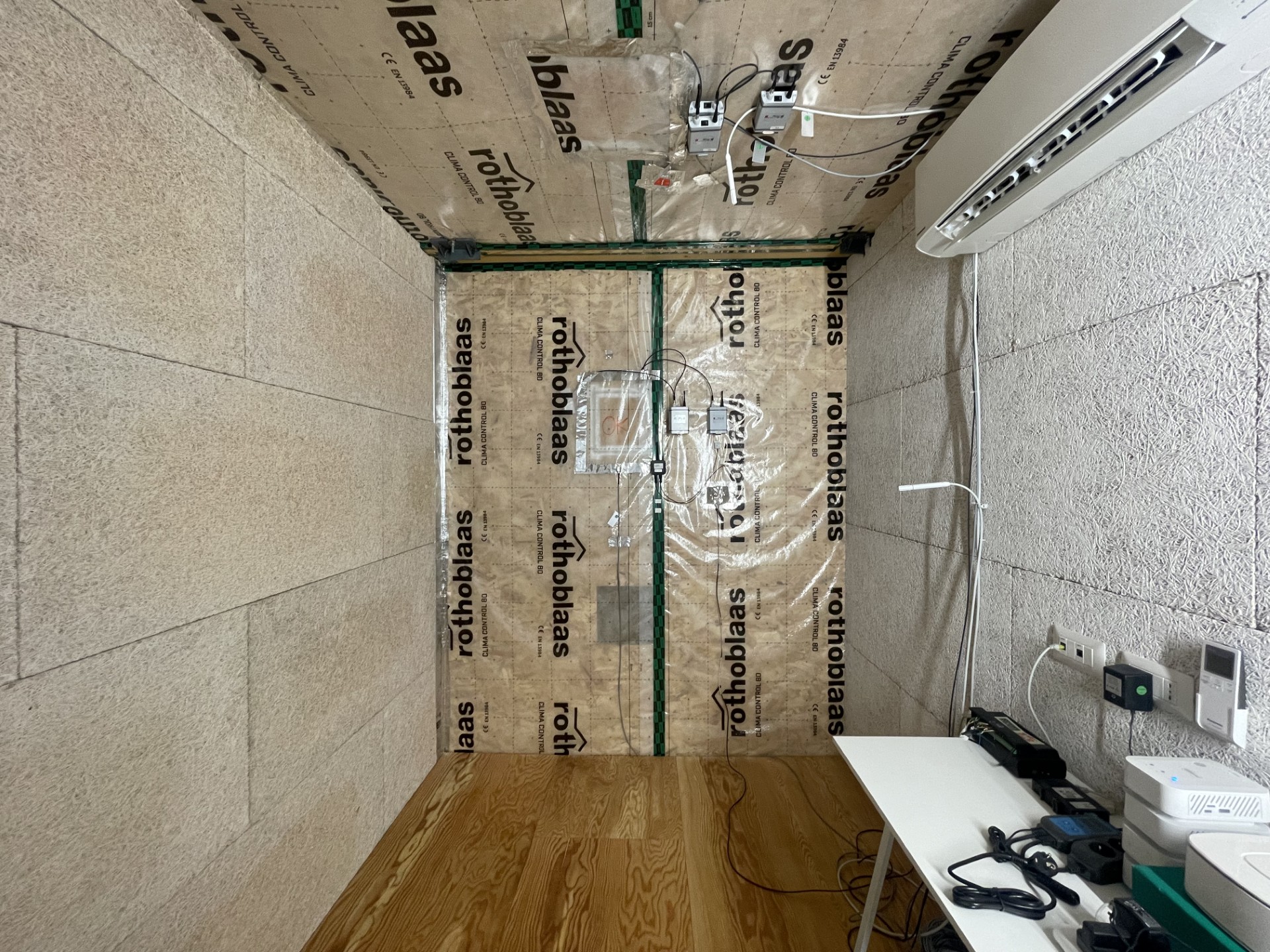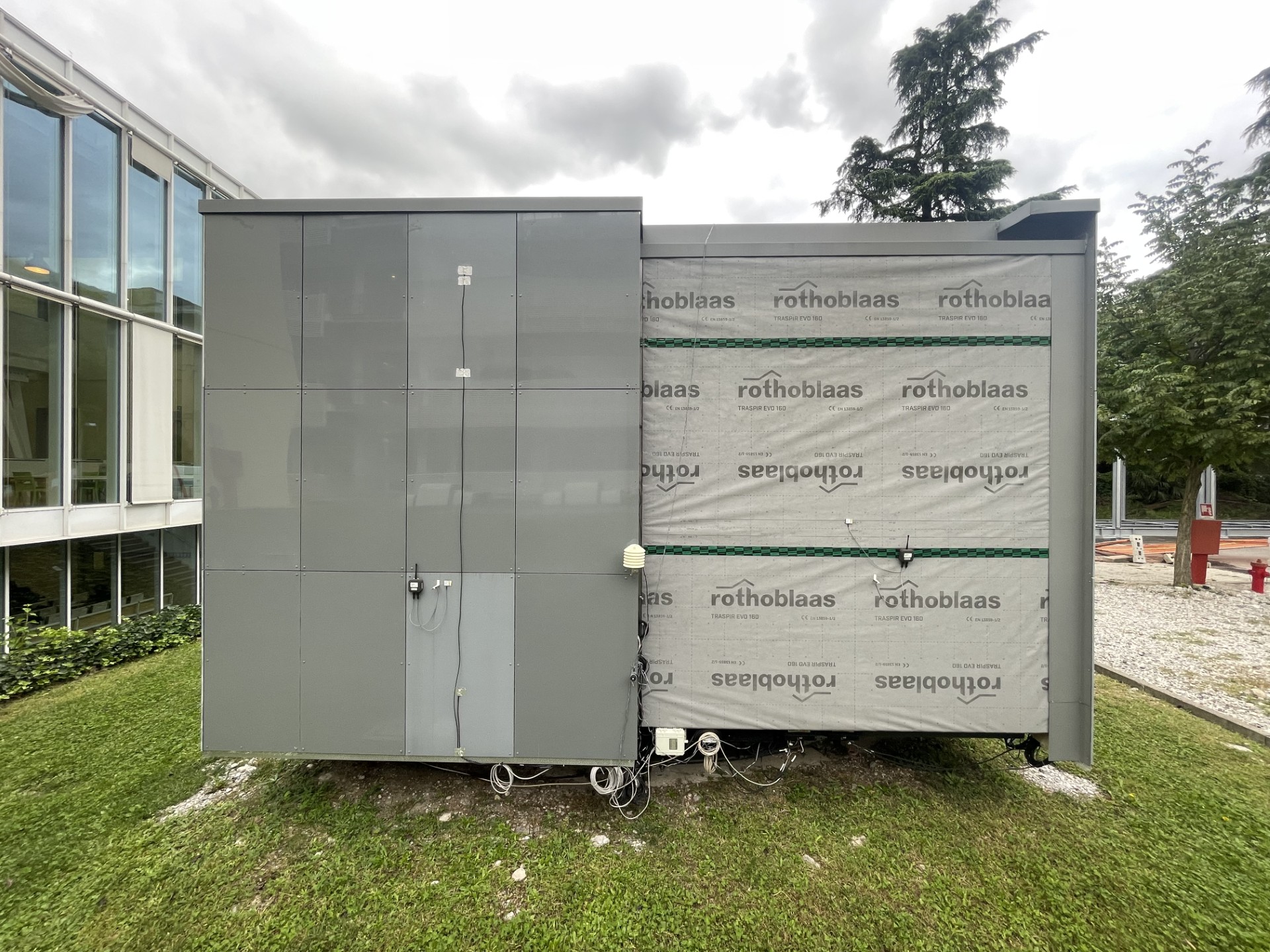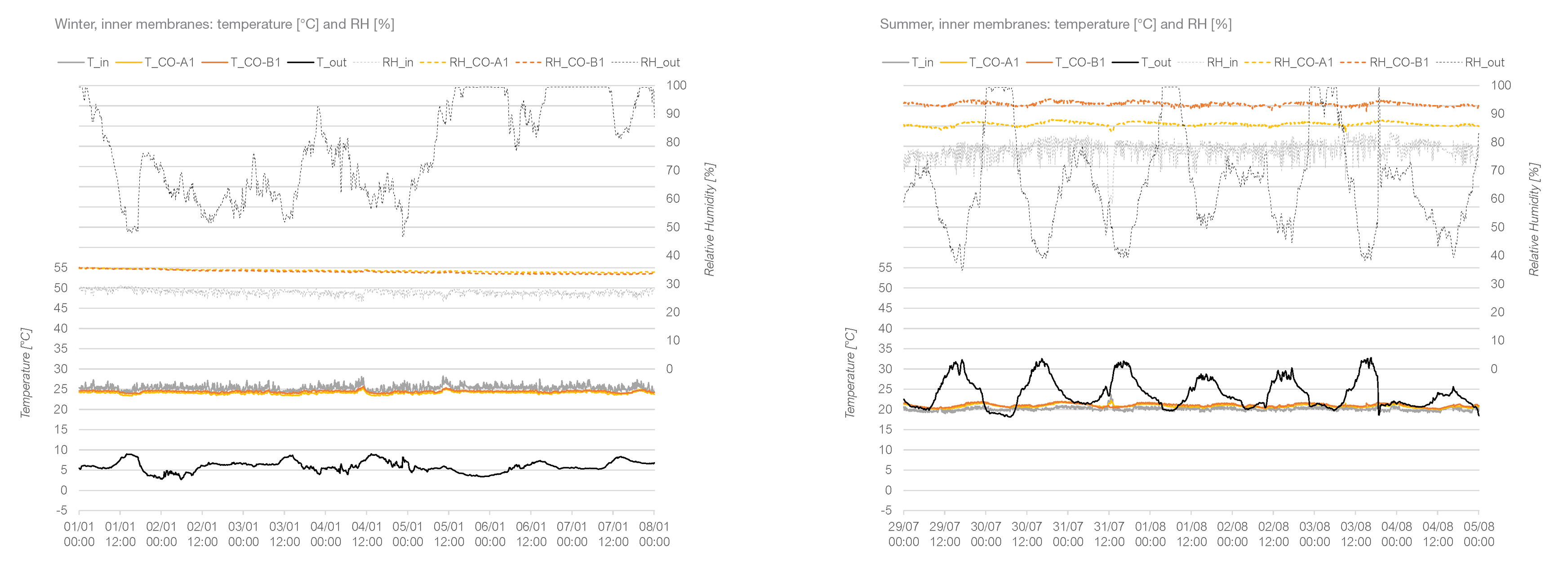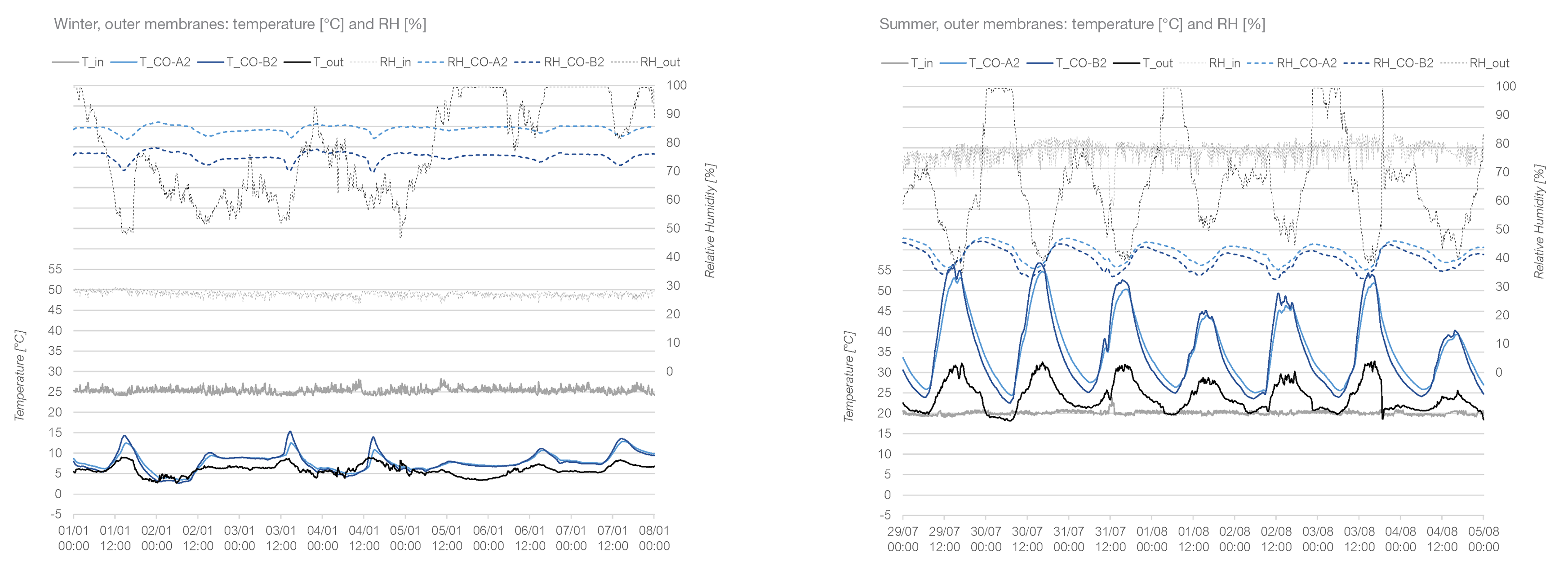Hygrothermal monitoring of membranes with varying vapor resistance
- Home
- Success Stories
- Hygrothermal monitoring of membranes with varying vapor resistance


Tested Products:
CLIMA CONTROL 80
BYTUM BASE 2500
BYTUM SLATE 3500
TRASPIR EVO 160
TRASPIR WELD EVO 360
GROUND BAND
PM&VL6 offers a comprehensive characterization of building envelope components, thanks to its two infrastructures: the Materials & Structures Laboratory (M&S Lab, mechanical characterization) and the BEEpilot (thermal, hygrothermal, air quality and airtightness performances).
Main author:
Graziano Salvalai
Politecnico di Milano
Diletta Brutti
Politecnico di Milano
Marta Maria Sesana
Università degli studi di Brescia
The products were installed within 4 different building components, according to instructions provided by the manufacturer. The assessment was based on the simultaneous monitoring and comparison of values recorded by the same continuous monitoring system in both test rooms.
The monitoring started in August 2022 and was conducted for 18 months under real-life outdoor conditions. The products were applied in the two Test Rooms of the BEEpilot, in Lecco (IT), that also feature two direct air humidifiers (power up to 0.5 kg/h) to control their indoor relative humidity levels. At first their operation was manual; from late January 2023, although, a threshold value of 65-70% RH was set.


Inner membranes
Winter: comparable behavior in both Test Rooms A-B.
Summer: roof system in Test Room A (yellow in charts below) ensures lower RH values (about 10% less than Test Room B, orange).

Outer membranes
Winter: bituminous membranes in roof system of Test Room A (light blue in charts below) result in higher RH values (about 15% more than Test Room B, blue).
Summer: comparable behavior in both Test Rooms A-B.

The 18-months monitoring has allowed an in-depth study of the real-life hygrothermal behavior of the four different sets of products object of test. Dealing with membranes with varying and variable vapor resistance properties, and considering the respective different real-life environmental conditions, the comparison between winter and summer season was found of particular relevance.